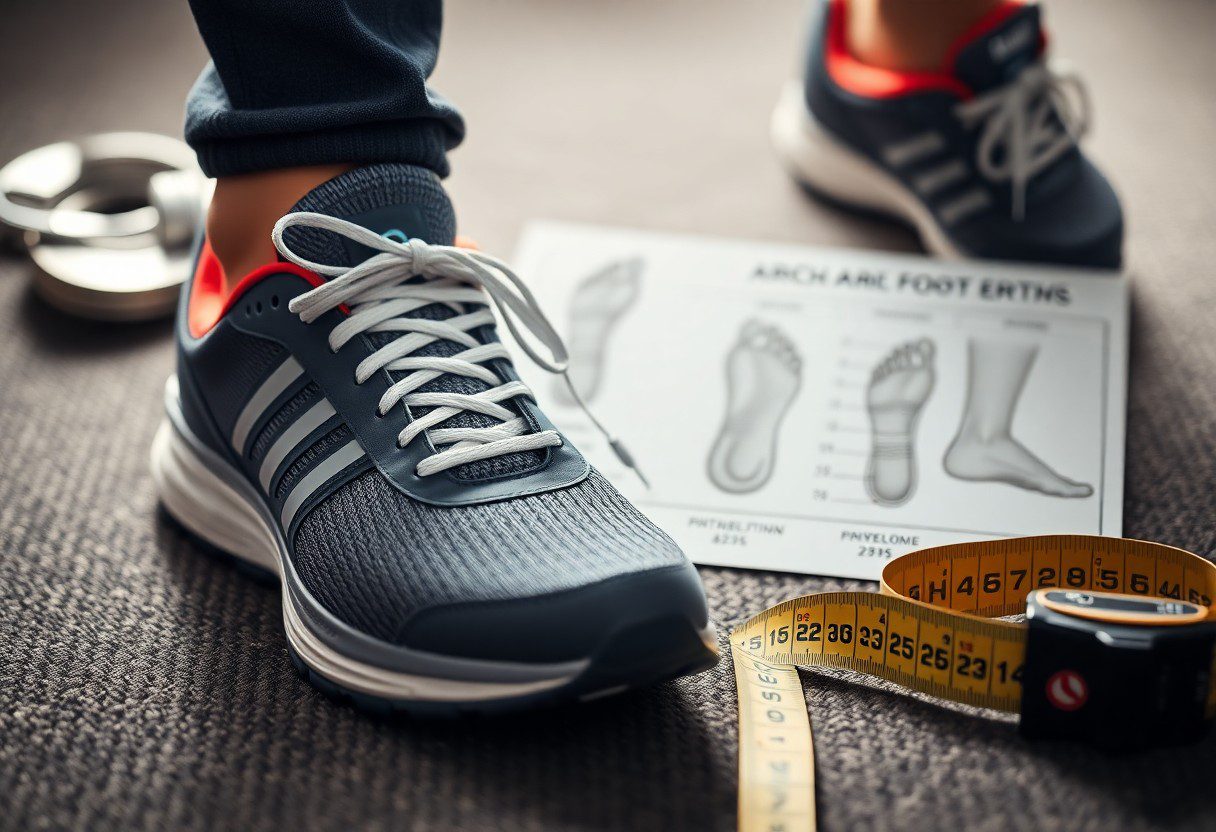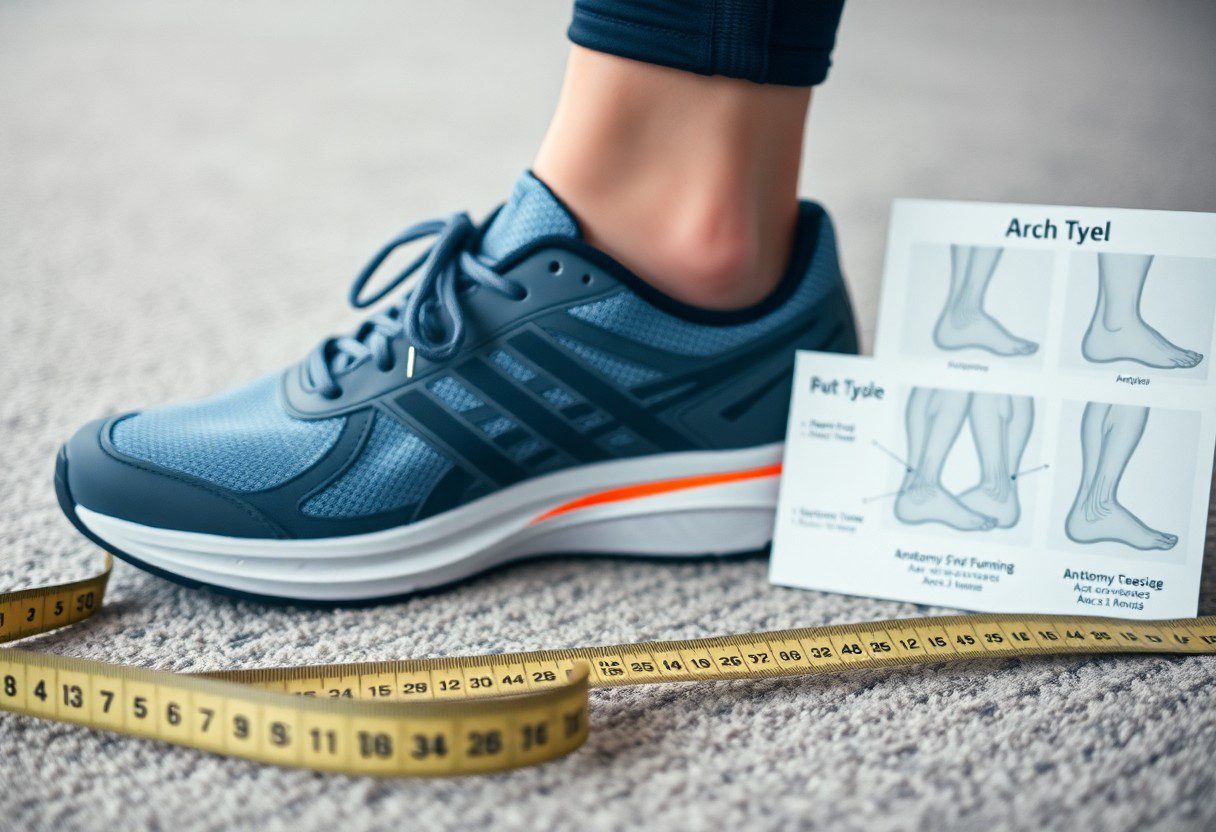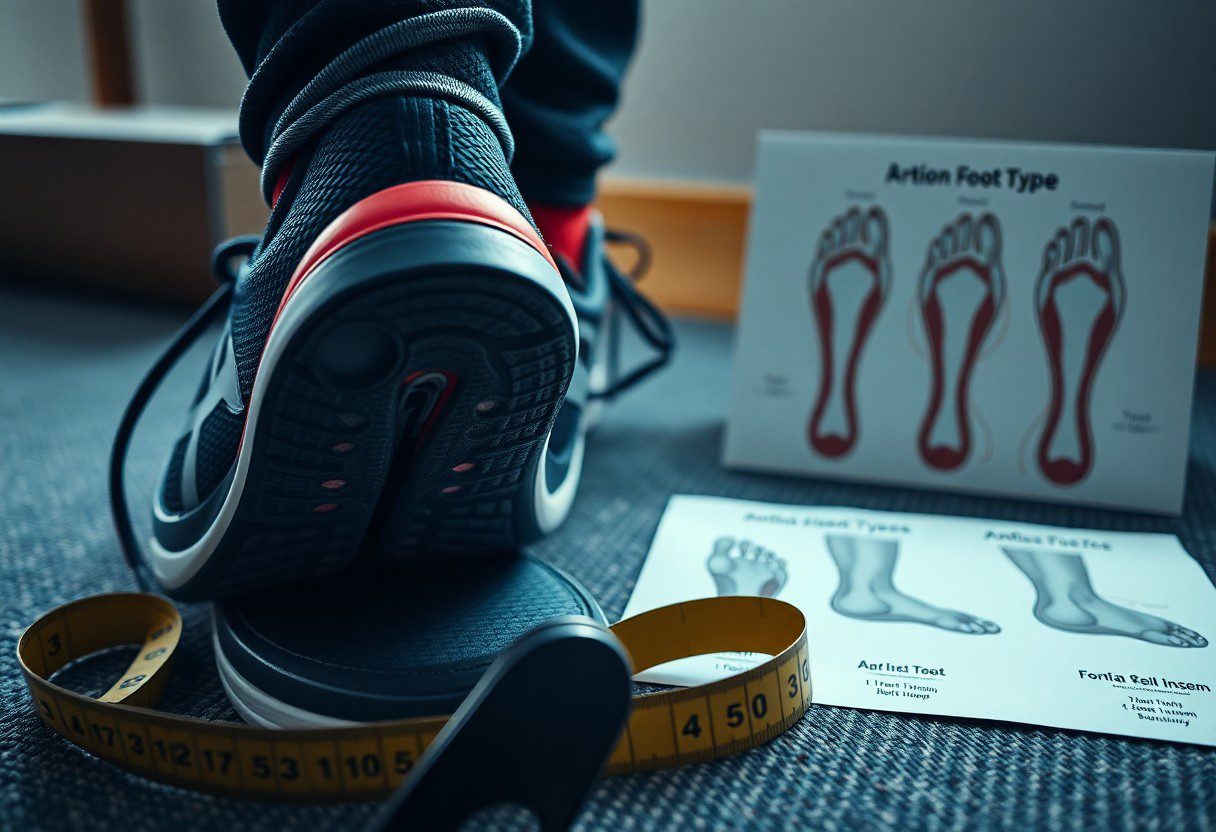Properly supporting your feet doesn’t always equate to adding arch support to your shoes. It may come as a surprise to many that most individuals do not require arch support in their footwear. In fact, scientific studies reveal that going without arch support can actually enhance the strength of your foot muscles. Over time, relying on artificial support can lead to muscle weakness. The human foot is designed with natural arches that flex and adapt to various surfaces, and restricting this natural movement with rigid supports could adversely affect your foot health in the long term. This comprehensive article aims to illuminate the science behind arch support, enabling you to make informed decisions regarding your foot health.

Exploring the Evolution of Arch Support in Footwear Design
The natural support system of your feet has been an integral part of footwear design for centuries. The notion of arch support gained significant traction in the 1920s when Dr. William Scholl pioneered the introduction of commercial orthotics. Prior to this advancement, individuals depended on the inherent strength and flexibility of their feet. This historical context provides insight into how our understanding of foot health has evolved and emphasizes the need to reconsider current practices in footwear design. Understanding this evolution highlights the importance of selecting footwear that respects the natural function of the foot, rather than adhering to outdated notions of support.
Tracing the Shift from Traditional Footwear to Modern Designs
The evolution of footwear reveals that ancient cultures predominantly utilized simple, flat sandals or often went barefoot. Such practices facilitated natural foot development and strength. The feet of our ancestors remained robust and flexible, independent of artificial supports, as supported by research on indigenous populations who continue to adhere to traditional footwear practices. This historical perspective underscores the essential role of natural foot mechanics in maintaining foot health and how modern trends often overlook these principles, leading to widespread issues that could be mitigated by returning to simpler footwear designs.
Evaluating the Consequences of Contemporary Shoe Design on Foot Well-Being
By the mid-20th century, specifically the 1950s, shoe manufacturers began incorporating built-in arch support as a standard component of footwear. Today, most modern shoes are designed with structured arch support, a feature that has become an industry norm despite the limited scientific backing for its universal necessity. This trend reflects a shift in consumer expectations and industry standards, but it also raises questions about the impact of such designs on foot health. With approximately 70% of modern shoes equipped with arch support, it's crucial to evaluate whether this reliance is beneficial or detrimental. Research published in the Journal of Foot and Ankle Research suggests that excessive reliance on arch support could result in muscle weakness in your feet. Consequently, many podiatrists now advocate for periodic barefoot walking and the use of minimally supportive shoes to sustain natural foot strength and promote overall foot health.

Understanding the Intricate Anatomy of the Human Foot
Despite the fact that your feet comprise 26 bones, 33 joints, and over 100 muscles, they operate most efficiently when allowed to move freely. The foot’s arch is a self-supporting structure that gains strength through regular use and becomes weaker when subjected to artificial support. Research indicates that 75% of individuals who wear conventional shoes with arch support experience diminished foot muscle activity, which can lead to reduced natural foot strength over time, highlighting the importance of allowing your feet to engage in natural movement. This emphasizes why embracing your feet’s natural design is critical for maintaining their health and functionality.
Recognizing the Advantages of Natural Foot Mechanics
Your foot’s natural design is a marvel of engineering, featuring a sophisticated system of self-support. Walking barefoot or in minimal shoes allows your feet to undergo a full range of motion, enabling your arches to flex and strengthen naturally. Studies suggest that individuals who frequently walk barefoot or opt for minimal shoes develop stronger foot muscles and more stable arches compared to those who rely on supportive footwear. This emphasizes the importance of natural movement in foot health, as it promotes the body's ability to maintain its own structural integrity, ultimately leading to better overall foot function and stability.
Effective Techniques for Boosting Foot Muscle Function and Strength
Disruption of your foot’s natural movement can hinder its development. Your foot muscles require regular engagement through natural activities to maintain their strength. Research published in Nature indicates that wearing shoes devoid of arch support aids in the development of stronger intrinsic foot muscles. This connection highlights the significance of natural movement for optimal foot health, particularly for individuals who may be experiencing discomfort or weakness in their feet. Engaging in activities that promote natural foot mechanics can greatly enhance muscle function and overall health.
Furthermore, it’s crucial to recognize the implications of wearing shoes with built-in arch support. When these shoes are worn, foot muscles may become less engaged, resulting in potential weakness over time. Studies have shown that transitioning to minimal footwear can lead to a remarkable increase in foot muscle strength by up to 60% within eight weeks. However, it’s important to approach this transition cautiously, especially if you have existing foot conditions, to avoid injury and support a healthy adaptation process. Careful consideration of your footwear choices can lead to significant improvements in foot health.
Analyzing Scientific Research Related to Foot Health and Arch Support
If you’re eager to grasp the science underlying arch support, numerous studies reveal that your feet can become stronger without the need for artificial support. Various investigations indicate that natural foot movement fosters better muscle development and enhances arch stability, underscoring the vital role of biomechanics in foot health and the potential hazards of over-relying on artificial supports. This research serves as a foundation for re-evaluating common footwear practices and considering a shift towards more natural options.
Highlighting Key Scientific Studies on the Effectiveness of Arch Support
Among the most pivotal research findings, a study published in Nature demonstrates that individuals who wear minimal footwear develop foot muscles that are 50% stronger compared to those donning traditional supportive shoes. This evidence supports the notion that regular movement and exercise allow your feet to maintain their arches naturally, reinforcing the benefits of choosing the right footwear. This comparison emphasizes the value of minimalism in footwear design for promoting better foot health.
Comparative Study of Footwear Preferences in Different Cultures
Contrasting Traditional and Minimal Footwear Users
| Traditional Shoe Users | Minimal Shoe Users |
| Exhibit higher rates of flat feet | Demonstrate superior arch strength |
| Show weaker foot muscles | Exhibit stronger foot muscles |
A comprehensive analysis of diverse populations reveals significant disparities in foot health. Your foot structure can adapt significantly based on the types of shoes you choose to wear, highlighting the need for individuals to assess their footwear choices actively. Awareness of these differences can empower individuals to make footwear decisions that better support their foot health.
Insights from Global Population Studies
| Developed Countries | Barefoot Communities |
| 20% flat foot occurrence | 3% flat foot occurrence |
| Higher reliance on arch support | Natural arch strength |

Unpacking the Support Paradox: Rethinking Footwear Choices
Challenging widely held beliefs, overreliance on arch support in shoes can compromise your feet’s natural strength. The human foot is intricately designed with a complex system of muscles, tendons, and ligaments that collaboratively provide natural support. When artificial arch support takes on this role, your foot muscles may become less engaged, leading to gradual weakening and a diminished ability to perform daily activities effectively. This understanding prompts a reevaluation of common footwear practices and encourages a shift towards choices that foster natural strength.
Recognizing the Dependency Cycle Induced by Arch Support
The continuous use of arch support creates a detrimental cycle. Feet can become reliant on external support, resulting in muscle atrophy. Research indicates that 70% of those who regularly use arch support report increased discomfort when walking without their supportive shoes, highlighting the development of this dependency that can affect overall mobility and comfort. Breaking free from this cycle is essential for restoring natural foot function and strength.
Connecting Muscle Weakness to Overuse of Arch Support
Wearing shoes equipped with built-in arch support could weaken your intrinsic foot muscles by as much as 50%, according to findings in Nature. This weakening compromises your feet’s natural arch support system, potentially leading to conditions such as flat feet and other foot-related issues. It’s essential to note that this muscle weakness can extend beyond your feet, as weakened foot muscles can adversely impact your overall posture and balance. Research indicates that individuals who transition to minimal footwear often experience a 60% increase in foot muscle strength within six months, showcasing the benefits of avoiding unnecessary supports.
Exploring Natural Alternatives for Optimal Foot Health
For those looking to move away from traditional arch support, there are several natural options available that can enhance foot strength. These approaches emphasize allowing your feet to function as they were designed, facilitating the development of stronger foot muscles and more stable arches through natural movement and practices that promote foot health. Embracing these natural alternatives can lead to significant improvements in foot strength and overall well-being.
Choosing Minimalist Footwear for Enhanced Natural Function
Minimalist shoes, characterized by zero drop soles, wide toe boxes, and flexible materials, promote natural foot movement. These designs enable your feet to move unhindered, assisting in maintaining proper foot mechanics and fostering natural arch strength. Research indicates that regular use of minimal footwear can enhance foot muscle strength by up to 60% through everyday activities, reinforcing the importance of choosing the right footwear for your lifestyle. Making informed choices in footwear can significantly contribute to long-term foot health.
Safe Strategies for Transitioning to Minimal Footwear Effectively
When considering a switch to minimalist footwear, it’s crucial to adopt a careful and gradual approach for your safety and comfort. Start by wearing minimal shoes for short periods, progressively increasing the duration over several weeks. This strategy helps prevent overuse injuries as your feet adapt to their newfound freedom, ensuring a smoother transition that supports long-term foot health. Gradual acclimation is key to successfully integrating minimal footwear into your routine.
A successful transition should ideally include specific foot strengthening exercises. Begin with 10-15 minutes per day in minimal shoes, adding an additional 5-10 minutes each week. Incorporate exercises such as toe spreads and short barefoot walks on safe surfaces. This incremental approach allows you to minimize the risk of common transition injuries while effectively building your natural arch strength, ultimately promoting better overall foot health as you adapt to your new footwear.
Considering Individual Medical Needs for Improved Foot Health
It’s important to acknowledge that your foot health requires personalized attention. While natural foot movement is beneficial for muscle strength, certain medical conditions may necessitate specific support. Factors such as your foot structure, activity level, and any pre-existing conditions will influence your ideal footwear requirements, emphasizing the need for individualized assessments. Tailoring your approach to foot health can lead to more effective outcomes and improved comfort.
Identifying Conditions That May Necessitate Arch Support
Contrary to common assumptions, arch support is not a universal requirement. However, individuals with acute injuries, severe flat feet, or particular medical conditions may benefit from temporary or permanent arch support. Research indicates that only 10-20% of the population truly requires specialized arch support for medical reasons, highlighting the importance of personalized assessments to ensure optimal foot health. This underscores the need for individuals to consult professionals regarding their specific foot health needs.
Guidelines for Thorough Professional Foot Health Evaluations
To ensure you make informed decisions about your footwear, it’s advisable to consult a foot health professional. Comprehensive assessments should encompass gait analysis, evaluation of foot structure, and review of medical history. These elements are essential for determining whether you need arch support or if transitioning to minimal footwear is a viable option for your unique needs. A thorough evaluation can provide clarity and direction in your journey toward improved foot health.
Support from a qualified professional can provide clarity and direction for your foot health journey. A thorough assessment should include measuring arch flexibility, assessing muscle strength, and analyzing walking patterns. Your healthcare provider should also take into account your daily activities and any past foot injuries to formulate an effective treatment plan tailored to your needs and lifestyle.
Analyzing Footwear Selections and Their Effects on Foot Health
Your choice of footwear significantly influences your foot health. You now understand that arch support is not essential for most individuals and may, in fact, weaken foot muscles over time. Your feet possess innate strength and flexibility, functioning optimally when allowed to operate as nature intended. If you’re considering a transition to minimal footwear, starting this process gradually will help your feet adapt effectively. The evidence strongly suggests that allowing your feet to operate without artificial support can lead to stronger muscles and improved foot health for the majority. Always consider your personal needs and consult a foot health professional for specific concerns regarding your foot health.
Common Questions Regarding Arch Support and Foot Health
Do healthy feet truly require arch support in shoes?
Most healthy feet do not require arch support in shoes. Studies indicate that natural foot strength develops more effectively without artificial support. The foot’s muscles and arches perform best when allowed to operate naturally. This aligns with research on populations that frequently go barefoot or prefer minimal shoes, which demonstrate stronger foot muscles and fewer arch-related issues. Understanding this can empower individuals to make better footwear choices.
Can the use of arch support weaken feet over time?
Indeed, prolonged reliance on arch support can lead to weakened foot muscles. When artificial support takes on the function of foot muscles, these muscles become less engaged and gradually lose strength. This can create a cycle of dependency. Research published in Nature indicates that individuals who consistently wear conventional shoes with arch support often experience weaker foot muscles relative to those who opt for minimal footwear. Breaking this cycle is crucial for restoring muscle function.
Who may genuinely need arch support in their footwear?
Certain individuals with specific foot conditions, injuries, or medical issues may genuinely benefit from arch support. This includes those diagnosed with flat feet, particular foot injuries, or structural abnormalities. However, these situations should be evaluated by a foot health professional capable of developing an appropriate treatment plan. The aim should be to restore natural foot function whenever feasible, rather than relying on permanent support, fostering a healthier foot environment.
The Article Arch Support: Essential Facts About Shoe Necessities Was Found On https://limitsofstrategy.com
The Article Arch Support: Key Insights on Essential Shoe Needs First Appeared ON
: https://ad4sc.com





7 Responses
You raise an interesting point about the dynamics of arch support and foot health. I’ve found it particularly fascinating that our feet are designed to adapt and strengthen naturally—something that seems counterintuitive in an age where we often prioritize the support of modern footwear. My own experience reflects this; transitioning away from heavily cushioned shoes has helped me develop a better sense of balance and improved my overall foot strength.
This discussion about arch support opens up a fascinating and often overlooked area of foot health. I have to admit, prior to reading this article, I had always associated any discomfort in my feet with a need for additional arch support. It’s intriguing to consider that this reliance on artificial supports might actually hinder the natural strength of my foot muscles.
It’s interesting that you mention the relationship between discomfort and arch support. Many people share that assumption, and it’s understandable given the journey most of us take when it comes to foot health. We often look for quick solutions—something to relieve pain right away—without considering the long-term impact of those solutions.
“I’m glad you found the discussion thought-provoking! If you’re interested in exploring more about how to strengthen your foot muscles naturally, check out this insightful resource.”
https://bigpapanetwork.com/motiv8
You’ve really touched on an important and often overlooked aspect of foot health! It’s fascinating to think about how our understanding of arch support has evolved over the decades. Personally, I’ve always been drawn to minimalist footwear, which aligns with your point about allowing our feet to move naturally. I remember making the switch from heavily cushioned sneakers to a more minimalist style, and at first, it seemed daunting. Still, I noticed a remarkable increase in my foot strength and overall stability in activities like running and hiking.
This post dives into a hugely significant yet often overlooked aspect of foot health that resonates deeply with my own experiences. It’s fascinating how, as we evolve in our understanding of human anatomy, we also challenge long-held beliefs about what we “need” for comfort and support. I can relate to the way many of us intuitively reach for the crutch of arch support, especially in a world so filled with rigid, mass-produced footwear that neglects the unique architecture of our feet.
It’s interesting to think about how our relationship with footwear has evolved, isn’t it? The reliance on arch support is such a common response to the rigid styles we see everywhere. I remember my own journey with finding the right shoes—there was a period when I was convinced that the more structured the shoe, the better it would be for my feet. But as I delved deeper into body mechanics and experimented with different types of footwear, I found that less really can be more.
This is such an interesting perspective on foot health! I’ve always leaned toward a bit of arch support, thinking it was the way to go for comfort. It’s wild to consider that going without it could actually strengthen my foot muscles over time. I remember when I switched to minimalist shoes for running, and I was surprised at how my feet felt afterwards—so much more grounded and responsive to the ground.